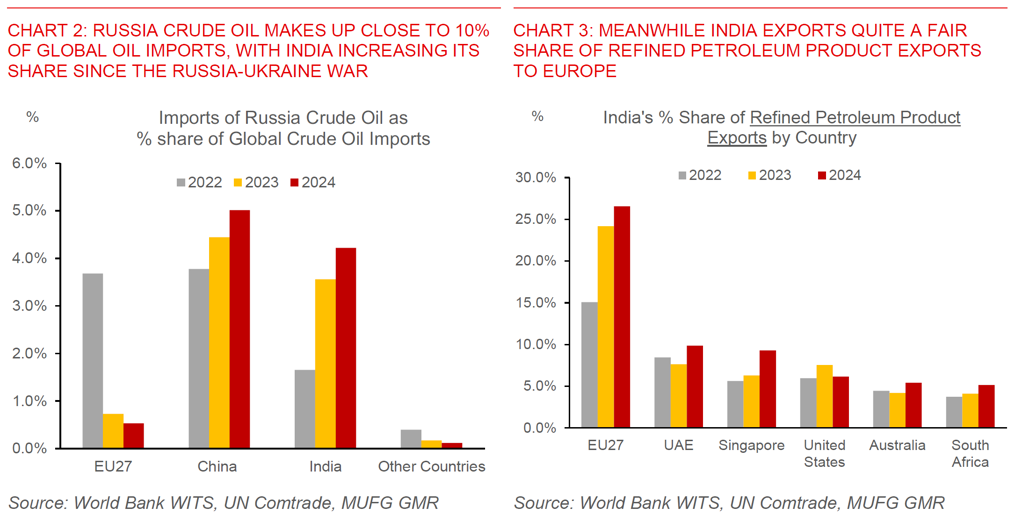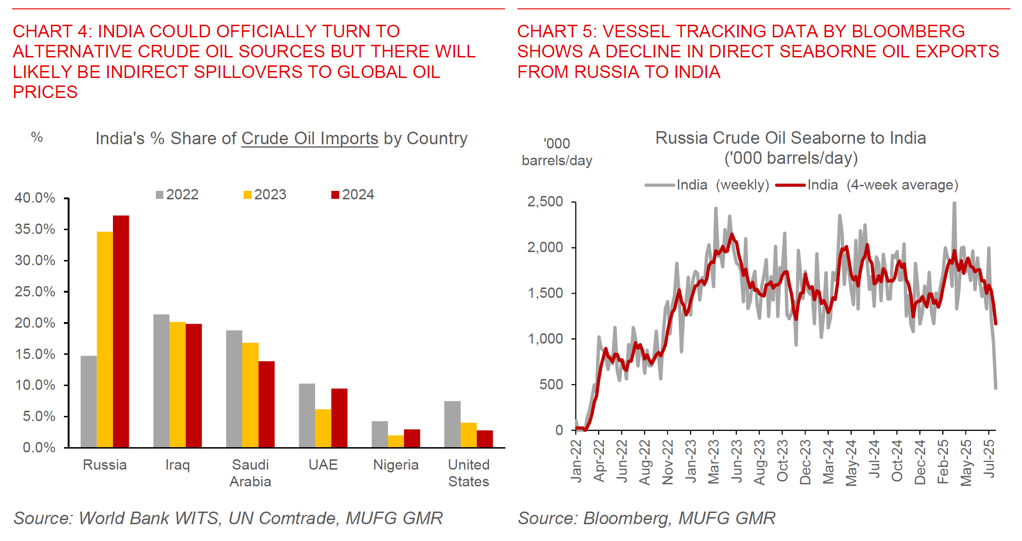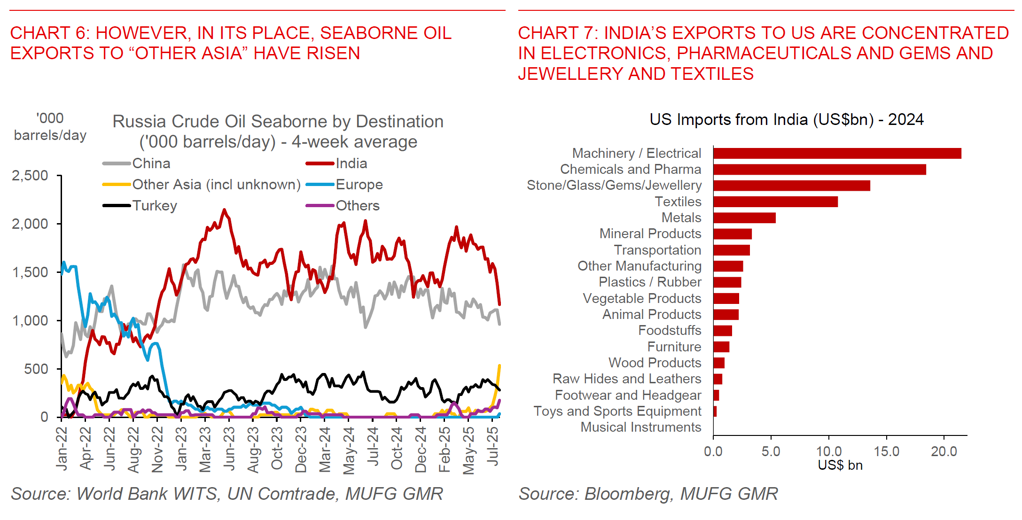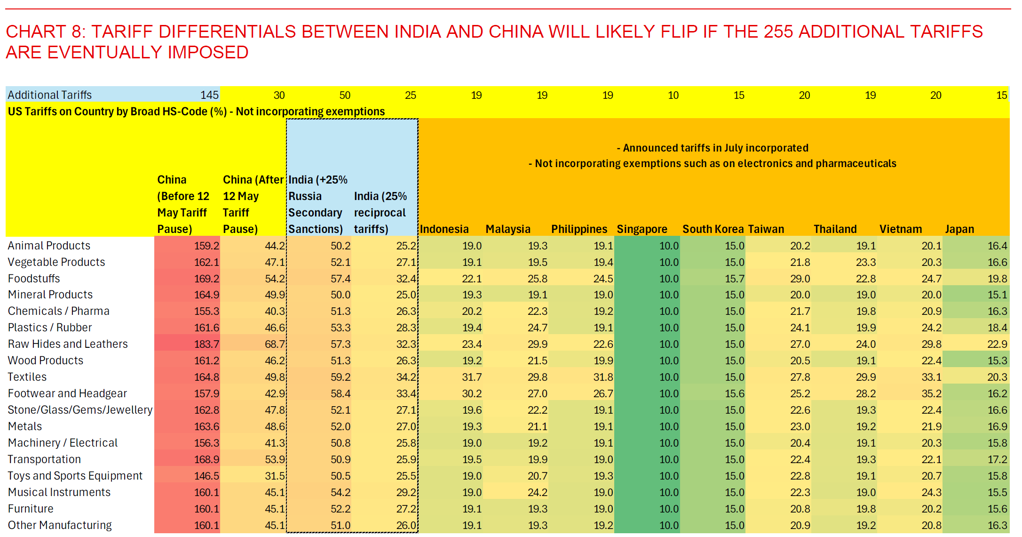Ahead Today
G3: US Initial Jobless Claims
Asia: China Exports
Market Highlights
President Trump announced an additional 25% tariff on Indian goods over its purchases of Russian energy, effective from 27 August. These will be stacked on top of reciprocal tariff rates of 25% for India for a total of 50%, but will not apply to exempted products such as electronics and pharmaceuticals which will come under separate sectoral tariffs later. On these additional tariffs, it is unclear how much space there is for negotiations between the US and India in reality, and whether other countries which also buy Russia oil such as China would also have tariffs imposed on them. An important related development was Trump’s announcement that there was a “very good chance” he would meet with Russian President Putin and Ukraine President Zelenskiy in a bid to broker peace between the two countries. According to Bloomberg news, Trump was positive about the possibility of a ceasefire, and suggested that Putin would be open to entering into peace talks in exchange for discussing land swaps.
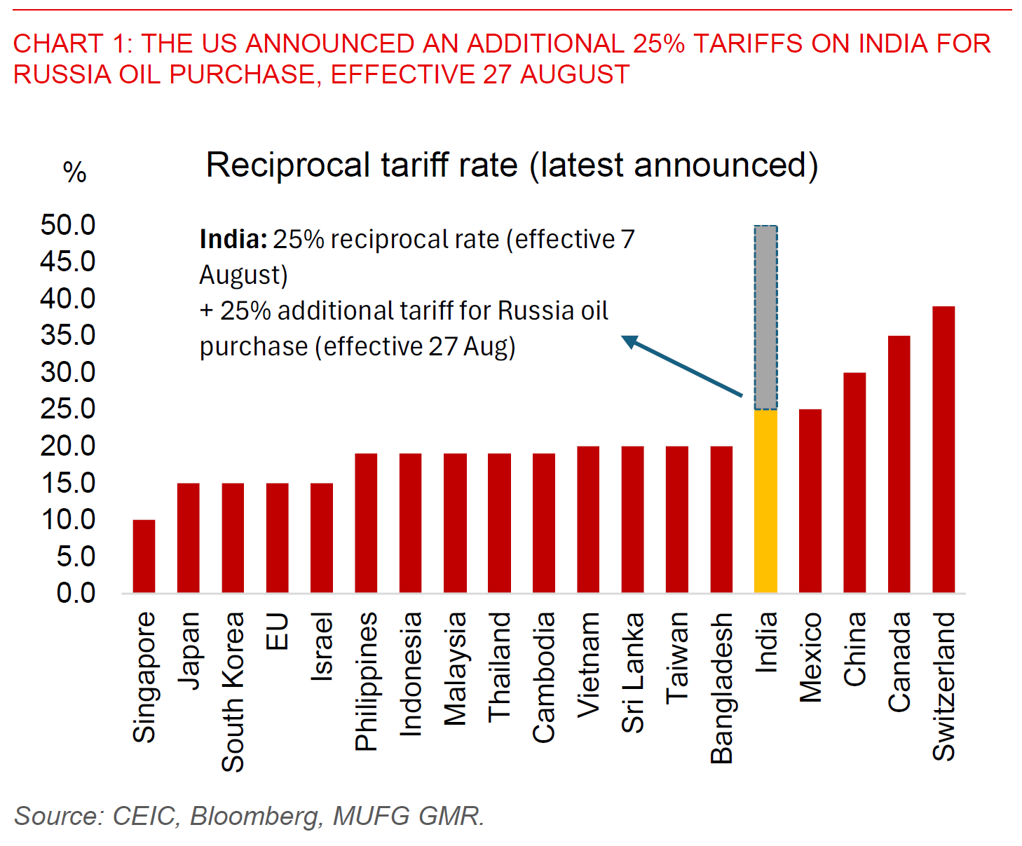
For India specifically, these 50% tariffs if they are eventually imposed on a sustained basis will be a significant negative for many labour intensive export sectors in India including textiles, gems and jewellery, toys, furniture, and many more. In addition, the negative impact to India’s GDP will likely much larger than the 0.3pp that we currently estimate (see India-US trade talks and tariffs – Delayed and denied?). At these announced rates, India’s tariffs would actually be higher than not just its export competitors such as Vietnam, but also China’s tariff rates across a whole range of products. This is even as we have highlighted India’s more domestic-oriented nature and current tariff exemptions on electronics and pharmaceuticals as mitigating factors. News overnight that Trump may impose a 100% tariff on semiconductors but impose 0% tariffs on companies such as Apple which shift production back to the US is a mixed message for India for now, given India’s current importance as an assembly hub for Apple for iPhones.
Overall, whether these developments on the Russia-Ukraine war turn out to be a negative demand shock for India – through materially higher tariffs on India’s exports – or conversely a negative supply shock through higher global oil prices if Russia oil gets taken off global markets, or perhaps a combination of both remains to be seen. We have highlighted in our latest report that we are extremely hesitant to build in these risks officially in our FX and rates forecasts, both because there are alternative scenarios of an eventual resolution in the Russia-Ukraine war, and also because global oil prices are still ample today (see India-US trade talks and tariffs – Delayed and denied?).
Nonetheless, the scale and importance of Russia’s oil production for global consumption and as such oil prices is not to be downplayed if there is a more material enforcement of Russia oil sanctions. Close to 10% of global crude oil imports coming from Russia, and India currently takes 42% of that global share today while processing quite a bit of refined petroleum products and ultimately sending to Europe. If India were forced to find alternative barrels of oil, the indirect spillover impact to global oil prices should not be under-estimated, even as we think this scenario is still highly unlikely and with OPEC+ in the process of increasing production quotas.
For what it’s worth, the latest vessel tracking data by Bloomberg suggests some declines in direct seaborne exports by Russia to India, but in its place we are seeing seaborne oil exports to “Other Asia” rise, highlighting the difficulty of enforcing restrictions on global oil flows.
